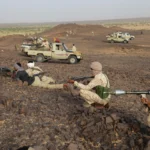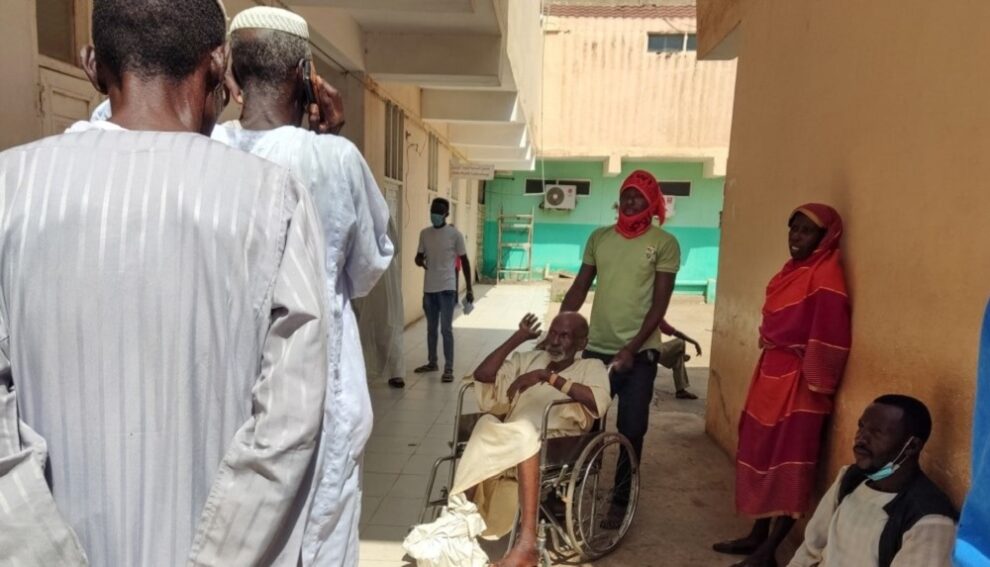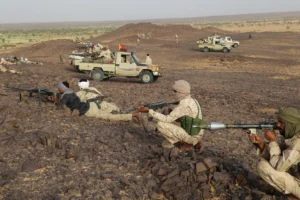GENEVA — The World Health Organization warns that disease outbreaks, malnutrition and non-communicable diseases are rising in war-torn Sudan, with devastating consequences for millions of people forced to flee their homes in the face of escalating violence.
Since conflict erupted April 15, more than 4.6 million people have become newly displaced inside Sudan. The number, added to the more than three million who already were displaced within the country before the current conflict, makes Sudan home to the world’s largest internally displaced crisis.
“The health system in Sudan is stretched to breaking point as capacities decline in the face of mounting needs,” said Ni’ma Saeed Abid, WHO representative in Sudan, speaking Tuesday in Port Sudan.
“Access to health care continues to be limited due to insecurity, displacement, and shortages of medicines and medical supplies, placing millions of Sudanese at risk of severe illness or death from preventable and treatable causes,” he said.
The WHO says that 70 to 80 percent of health facilities are “non-functional in conflict hotspots.” It has verified 60 attacks against health care and personnel, leading to 34 deaths and 38 injuries.
“Conflict and the consequent massive displacement have driven the population further into a state of widespread malnutrition, with the lives of children hanging in the balance,” said Abid.

“Cholera, measles, dengue and malaria are circulating in several states. And a combination of any of these diseases with malnutrition can be lethal,” he warned.
According to the latest Integrated Food Security Phase Classification (IPC) estimates, 20.3 million people, or 40 percent of Sudan’s population, are facing hunger. Estimates show 4.6 million children, pregnant and nursing mothers are malnourished; 3.4 million children under five are acutely malnourished; and 700,000 children are suffering from severe acute malnutrition, which can lead to death.
“I have seen two or three children put on the same bed for treatment for acute severe malnutrition because of the high number of cases,” Abid said. “And all these children because of malnutrition are susceptible for infection.”
Since September 26, Sudan has declared outbreaks of cholera in Gedaref, Khartoum and South Kordofan states, with suspected cases reported from Al Jazirah and Kassal states.
“And there is a possibility of further expansion because of the quality of water supply, because of the sanitation and because of displacement,” Abid said. “We are expecting that we may see more states affected, more people affected.”
As of last week, the WHO reports 1,962 suspected cholera cases with 30 lab-confirmed cases and 72 associated deaths. It estimates more than 3.1 million people are at risk of cholera until the end of December.
The World Health Organization has stockpiled drugs and essential supplies for the treatment of cholera patients. It has deployed 14 rapid response teams into the affected areas, strengthened the country’s surveillance and early warning systems, and is getting ready to receive oral cholera vaccines for a campaign in Gedaref state.
More than six months have passed since the start of the crisis in Sudan. While efforts to contain some of the worst impacts of the disaster are critical, they are not enough.
Martin Griffiths, under-secretary-general for humanitarian affairs, says only peace will stem the humanitarian tragedy that continues to unfold unabated in the country.
In a statement over the weekend, he welcomed the resumption of peace talks in Jeddah, Saudi Arabia, saying they couldn’t have started soon enough.
“Thousands of people have been killed or injured. … Aid workers are hamstrung by fighting, insecurity, and red tape, making the operating environment in Sudan extremely challenging,” he said.
“We need the Sudanese Armed Forces and the Rapid Support Forces to break the bureaucratic logjam. We need them to fully adhere to international humanitarian law and to secure safe, sustained and unhindered access to people in need,” he said.
Source : VOA News











Add Comment